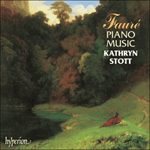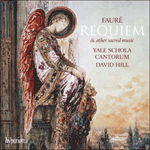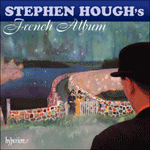
Welcome to Hyperion Records, a British classical label devoted to presenting high-quality recordings of music of all styles and from all periods from the twelfth century to the twenty-first.
Hyperion offers both CDs, and downloads in a number of formats. The site is also available in several languages.
Please use the dropdown buttons to set your preferred options, or use the checkbox to accept the defaults.

from notes by Bryce Morrison © 1995
extrait des notes rédigées par Bryce Morrison © 1995
Français: Catherine Loridan
aus dem Begleittext von Bryce Morrison © 1995
Deutsch: Angelika Malbert
 Fauré: Piano Music Fauré: Piano Music‘The best performances of this music I have heard. Her interpretations combine freedom and control in performances that range from the most tender ly ... ‘Take, for instance, the Fourth Nocturne—in Stott's hands a suave miracle of purling pearliness, fraught with delicate hesitations and suppressed sigh ...» More |
 Fauré: Requiem & other sacred music Fauré: Requiem & other sacred musicFauré’s Requiem in a radiant new account close in spirit to the composer’s intimate, liturgical original.» More |
 Stephen Hough's French Album Stephen Hough's French AlbumA master pianist demonstrates his manifold talents in this delicious selection of French music. Works by Poulenc, Fauré, Debussy and Ravel rub shoulders with lesser-known gems by their contemporaries.» More |

